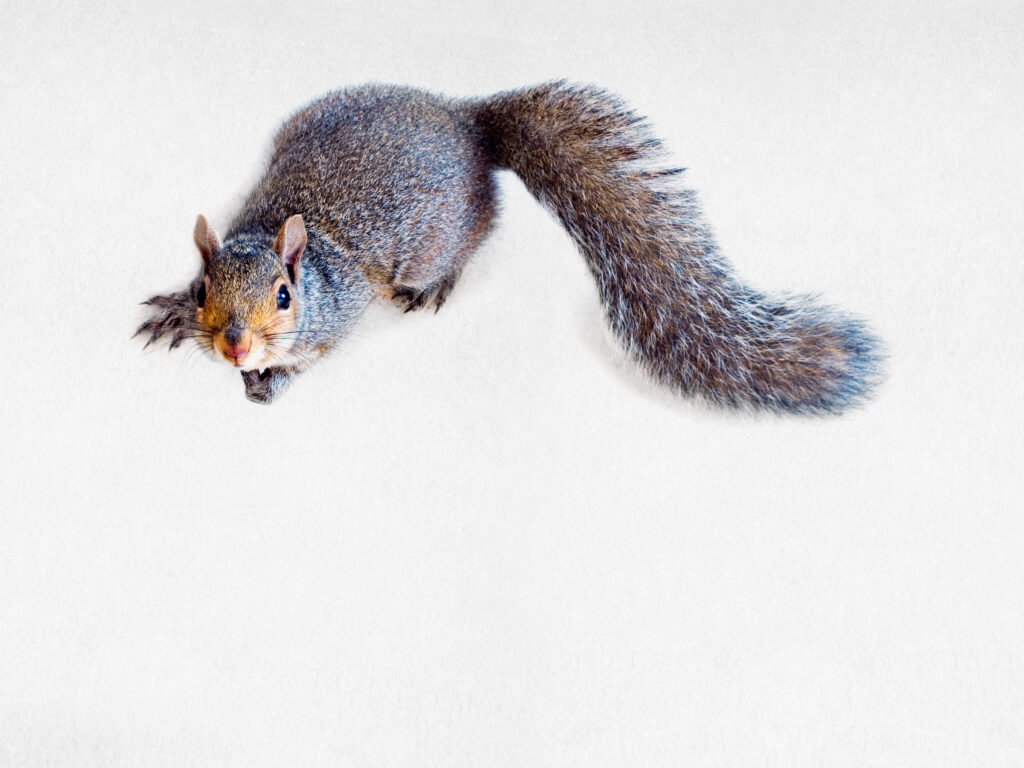
The TWC songbird room is full with various kinds of birds right now. All of the tables lining the walls, and all of the shelves on the back wall are full of various kinds of enclosures. Some with one, some with up to three or four birds in it. More blue jays than I have ever seen in one place, yellow-bellied sapsuckers hammering at the plastic walls of their enclosure, and sparrows, ovenbirds, kinglets, mourning doves, warblers, and thrushes.
Oh, the thrushes. Taller and leaner than many of the smaller songbirds, with slightly green-hued brown back, and white breast with a chandelier necklace of small brown spots cascading from the throat. Two of them were little escape artists tonight.
First time that any bird has escaped as I was replenishing their food. I had started at one end of the room, to the left of the door, and was making my way around the room, replenishing water, worms, seeds, and fruit for the various birds. And I was a half way around the room, at the very far wall of shelves that have 16 different enclosures on them.
I peer through each enclosure’s sides to determine how their supply of food and water are, so I don’t disturb the birds or risk flight. But I do have to open a corner of their enclosures, usually by carefully lifting fabric from the top, to be able to place more food into their dishes. And these little thrushes were ready!
Zap! In an instant – not one, but both had escaped their bird bin on a lower shelf. They were now flying around the room just below the ceiling. Immediately I turned off the lights, since birds will always fly directly to light. And I moved the sign from inside the door handle to the outside handle – it’s like one of those ‘do not disturb’ hotel room door signs, but this one tells people that a bird has escaped in the room, so they don’t open the door. And of course, I reached for a net.
The birds were now flying around the room and landing on the tops of the tall shelves and the other enclosures. Fortunately I was able to catch them quickly and gently, and no one was hurt. But the goofy thing was that their enclosure was perfectly covered, like all the others, and I wasn’t 100% sure which one they had escaped from.
Because I wasn’t confident which was their enclosure, and you don’t want to be checking three or four different ones with a terrified thrush in one hand, or worse – put them in the wrong enclosure with other birds – as soon as I caught them, I placed each one in a paper bag with a clip on it.
When both birds were safely each in a paper bag, I could then go back to find which one was their enclosure by checking the charts and, of course, seeing that no other bird occupied that enclosure. I then gently took the birds, in their bags, directly into their enclosure and released them back into their space with branches and water and food for the night.
Birds aren’t the only escape artists, and not the only animal that can escape in three dimensions of space.
Tonight a wily adult squirrel patient needed to be checked and given fluids. Now, I have learned that adult squirrels are in a completely different league from baby squirrels. The babies are squirmy and fussy but manageable. Adult squirrels, and this large grey speedster in particular, are astonishingly slippery, smart, lightning fast, and will jump and climb in all directions. In this case, there were three of us humans, including two experienced staff people and me – and the squirrel out-manoeuvered us all.
First thing it did as the senior staff person was checking the healing progress of its eyes, was jump out of its enclosure onto her shoulder, leap past all of us onto the wall of the small room, and start to climb up the wall. When it realized the wall was made of plastic not good for gripping, it leapt in the opposite direction – bounded off my hand (fully covered in thick gloves for handling adult squirrels), onto and over the shoulder of the other staff person, and up the pipe on the far wall.
Though terrifying for the squirrel and frustrating for the humans, really, the whole scene was comical.
The staff each had a net and were working to catch the squirrel. Once they did, we realized the squirrel had cut its lip in its efforts to escape. It was checked over and placed in a different enclosure to rest and de-stress for a while, as its main enclosure was cleaned.
When it came time later to give the squirrel fluids and treat the cut lip, it was two of us – C, the wonderfully patient and great instructor staff person who I work with on most Sundays, and me. I was wearing thick gloves to handle and hold the squirrel while she treated it. And we were doing well. I had captured it inside the temporary enclosure using a soft fuzzy blanket and thick protective gloves, and was able to hold it to be hydrated. Despite always having water in its enclosure, it was quite dehydrated as C noted by pointing out how the fluids were going in and the texture of the squirrel’s skin.
Then the squirrel pulled an impressive contortionist move as it flattened itself enough to slightly loosen my grip on it, while at the same time propelling itself forward, out from under the fleecy and my gloves, and up the pipe in the corner of the room again.
As noted in Wild City, “Their specialized vision makes instant trigonometric computations using vertical objects, mainly trees, to judge leaping distances, while four sets of whiskers and other sensing hairs guide them to twist and contort around obstacles at hyper-speed.”
Exactly. This squirrel leapt around the room until we caught it with a net. By this time, the net was destroyed. The squirrel was ok.
I ended up holding the squirrel against my chest, facing outward, for C to treat its lip. Which it took to surprising well, biting the medicinal foam and therefore helping to treat its mouth. Thank goodness for the thick gloves – I didn’t feel a thing as the squirrel chomped on my hand as I returned it to its clean, food and branch-filled main enclosure.
